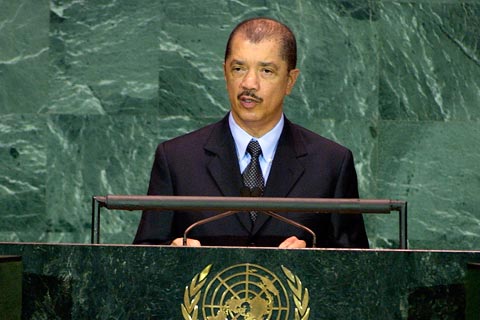The speed of changes in the Arctic is hard to grasp.
The Arctic Ocean has been covered by sea ice for most of the past three million years. But now it is melting before our eyes and could see its first ice-free summer in a couple of decades or less.Since my school years, the Arctic summer sea-ice extent has already shrunk to half!
Last week the United Nations Environment Programme (UNEP) cautioned against a rush in the Arctic for exactly the fossil fuel resources that fuelled the melt in the first place.
Arctic permafrost and the Greenland ice sheet are also melting at an alarming speed, and oceans becoming more acidic. Without rapid action, the world can be tipping towards irreversible climate chaos.
Yet, instead of cutting pollution and protecting the Arctic, some, like Shell, want to accelerate the destruction, by rushing to exploit the area’s natural resources. Greenpeace, together with 2.7 million Arctic Defenders around the world, is not going to let this happen.
The UNEP Year Book 2013, released at the UNEP’s 1st universal Governing Council in Nairobi, issues an Arctic alert for governments, calls for extreme caution and says there should be no steps to exploit the new state of the Arctic prior to assessing impacts, and until adequate management frameworks have been put in place.
The Arctic mustn’t be seen only as a regional issue and left for the Arctic countries alone to manage, says UNEP. All governments must take responsibility for protecting it, because failing to do so would have dramatic consequences for the whole world. As UNEP’s Nick Nuttal put it: “We are bringing the Arctic issue here because we want all ministers to be involved in this issue.”
We agree, which is why I took the floor and urged governments to act on UNEP’s recommendations without any delay. What we want to see, in terms of management, is the creation of a global sanctuary in the area of international waters around the North Pole; a ban on offshore oil drilling; and a moratorium on industrial fishing in previously unfished areas of the Arctic region. We also urgently need measures to manage the potentially damaging impacts of increased shipping in the Arctic, and measures to control the emissions of black carbon.
The Arctic wasn’t really a topic at this UNEP GC itself. Instead the agenda focused on reinventing the UNEP institutionally, to strengthen it as the unique convening authority on environmental sustainability. This was one of the decisions governments made in the Rio+20 summit last June.
Unfortunately, after 40 years of UNEP’s existence, governments still aren’t willing to make it strong enough to match today’s environmental challenges. Last week some decisions were taken to make the organization more strategic and policy-relevant and raise its profile as a global authority. This is all good, but as long as UNEP can only plead, coach and capacity build, while the World Trade Organization can impose punitive tariff measures on those breaking their rules, there is an unacceptable inequality of power, as my bosses write in the latest issue of Our Planet.
Let’s get serious about protecting our planet, our only home, by building the institutions, laws and coalitions that it requires. In the near future, the Arctic will be the primary test of the ability of the global community to act together, to save ourselves from ourselves.
I challenge the environment ministers around the world to become ambitious Arctic defenders, and join a race that isn’t about exploitation, but about boldest actions for protection. The Arctic environment ministers, who met recently in Jukkasjärvi, Sweden, spoke in Nairobi about some of the plans they had for taking action forward, including under the Convention of Biological Diversity. UNEP’s ideas are also worth exploring more. More












